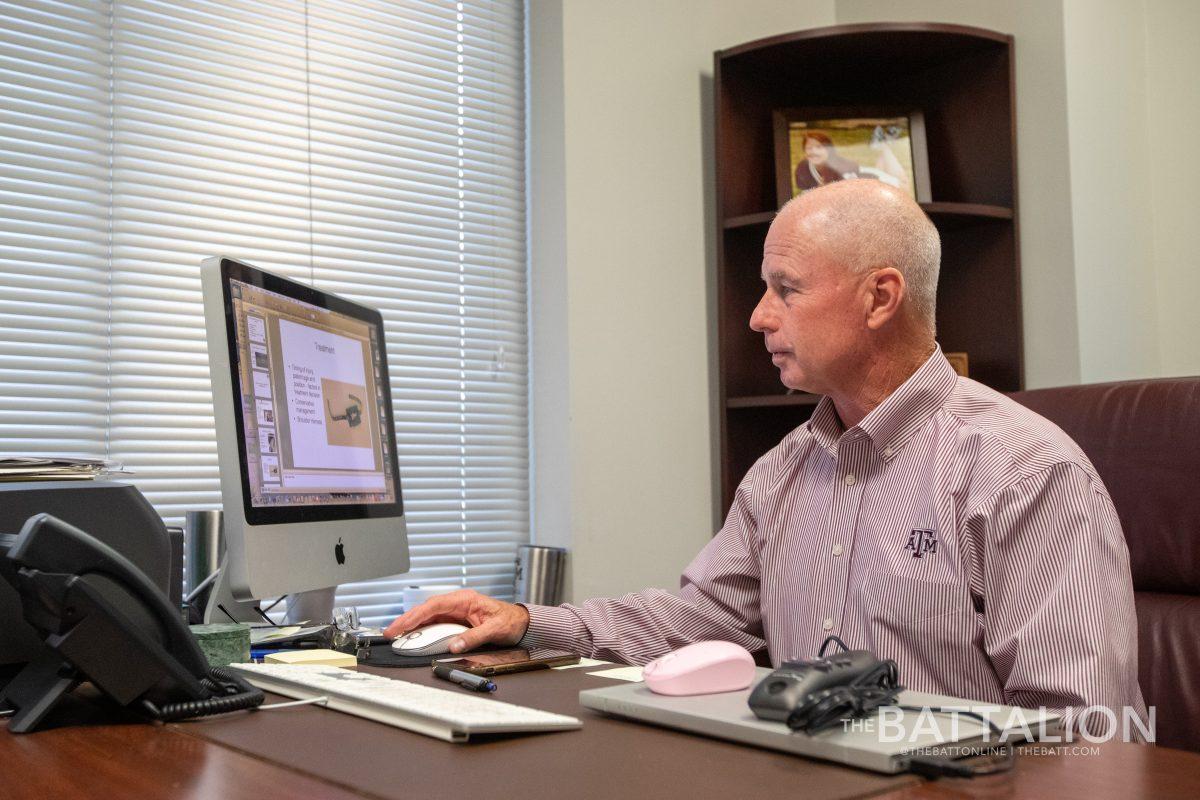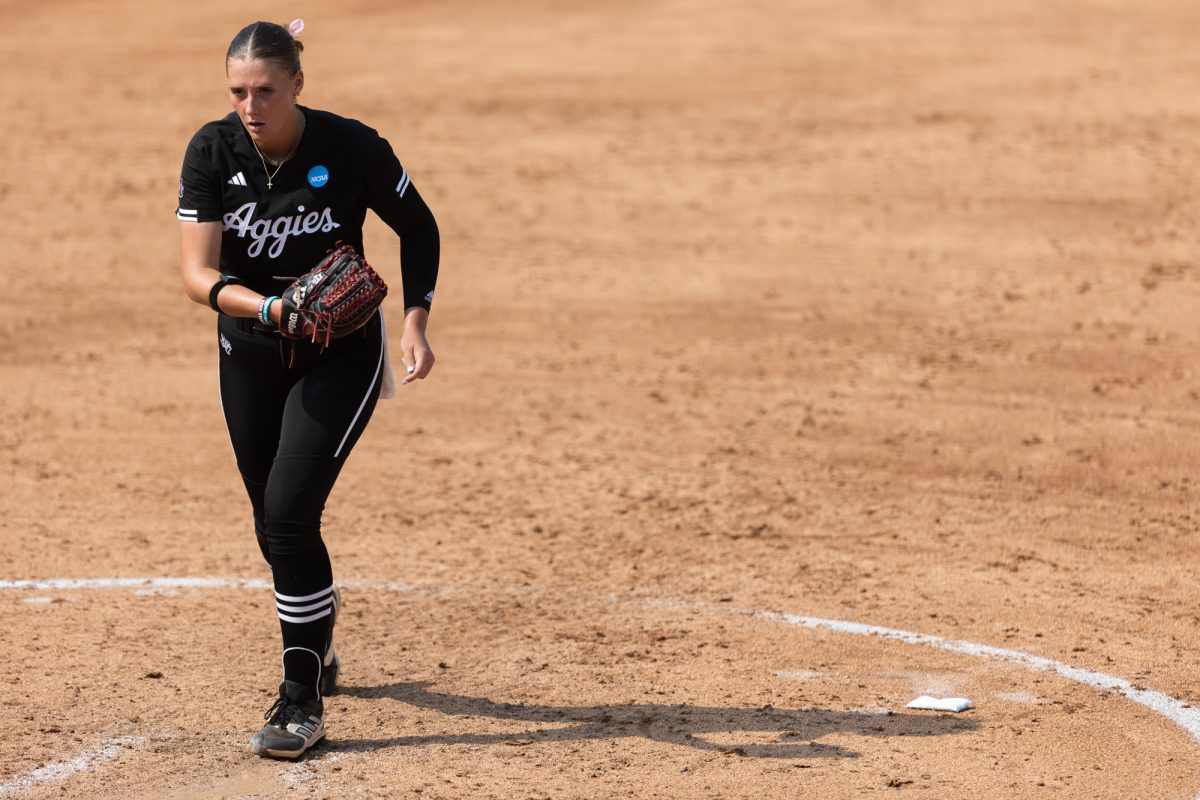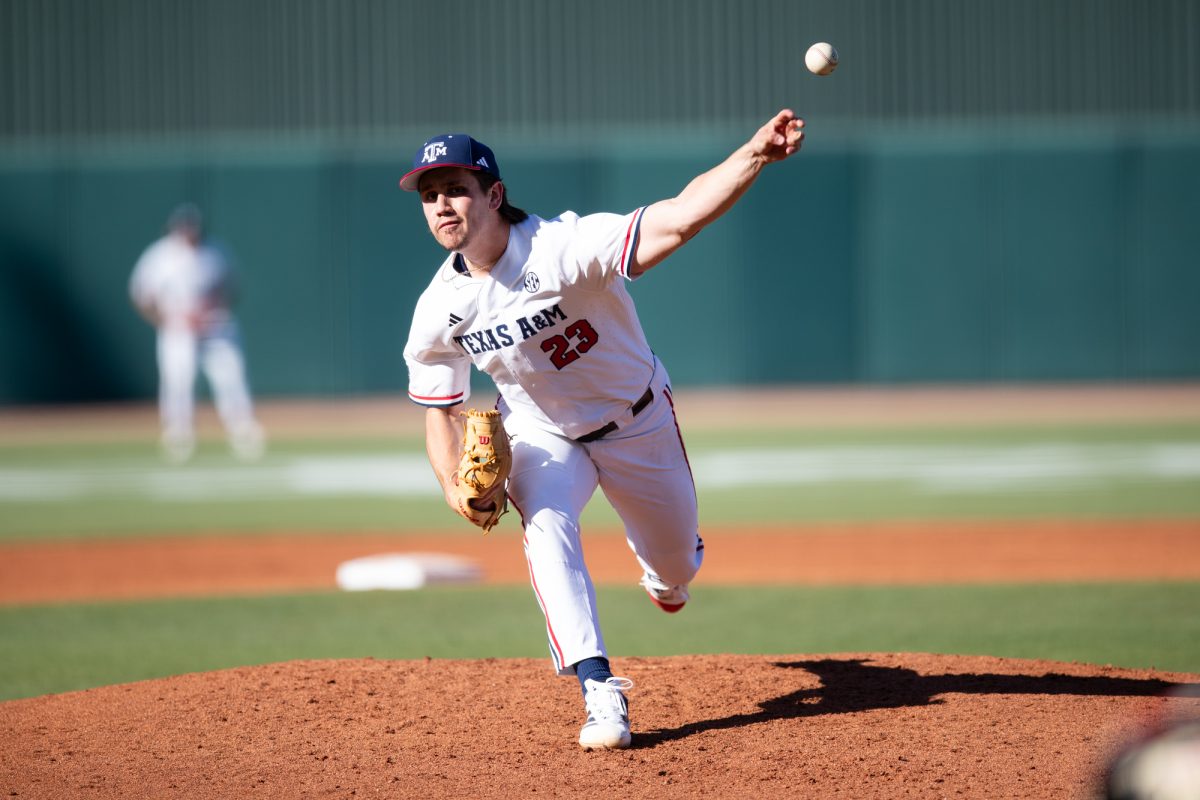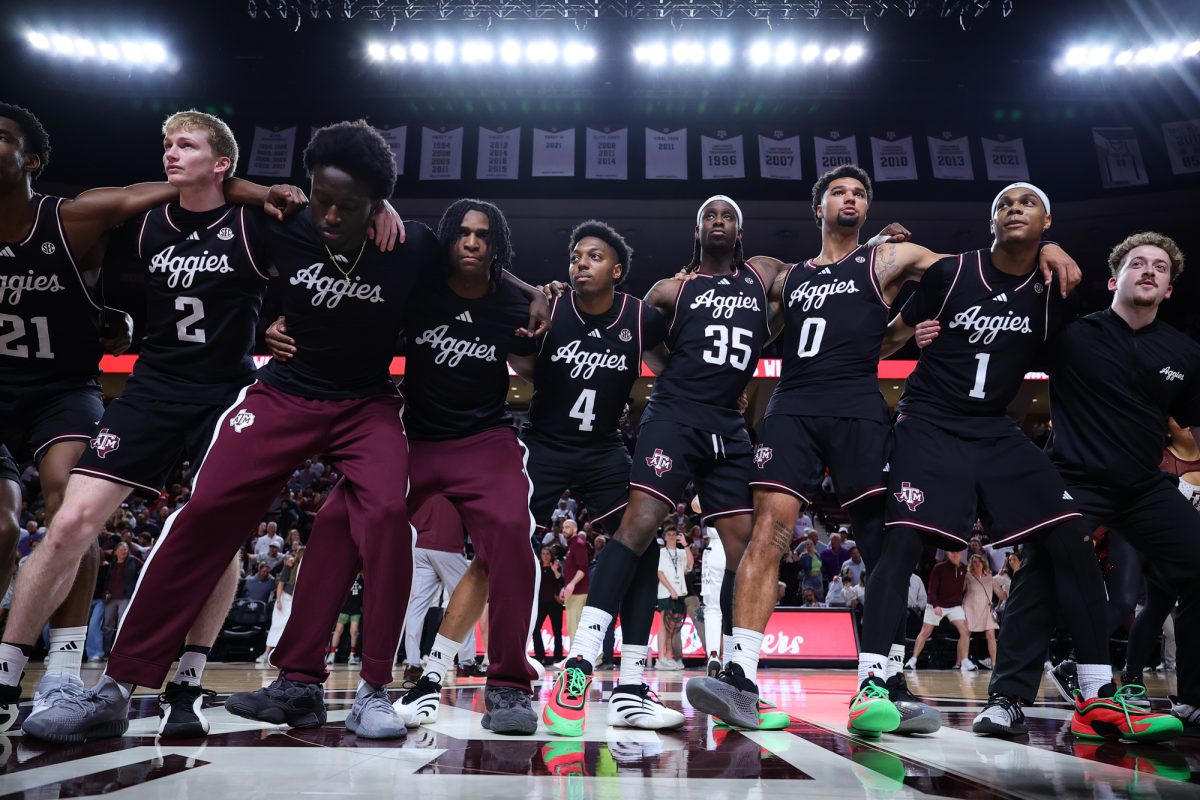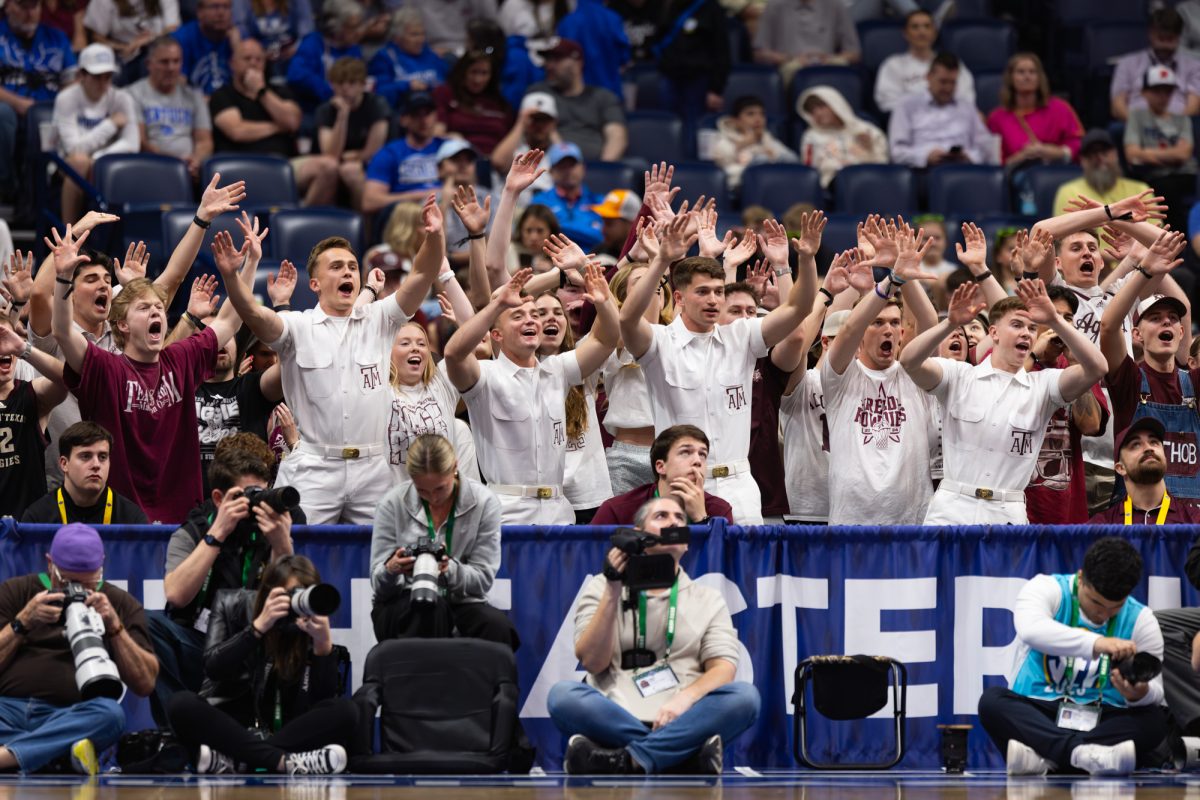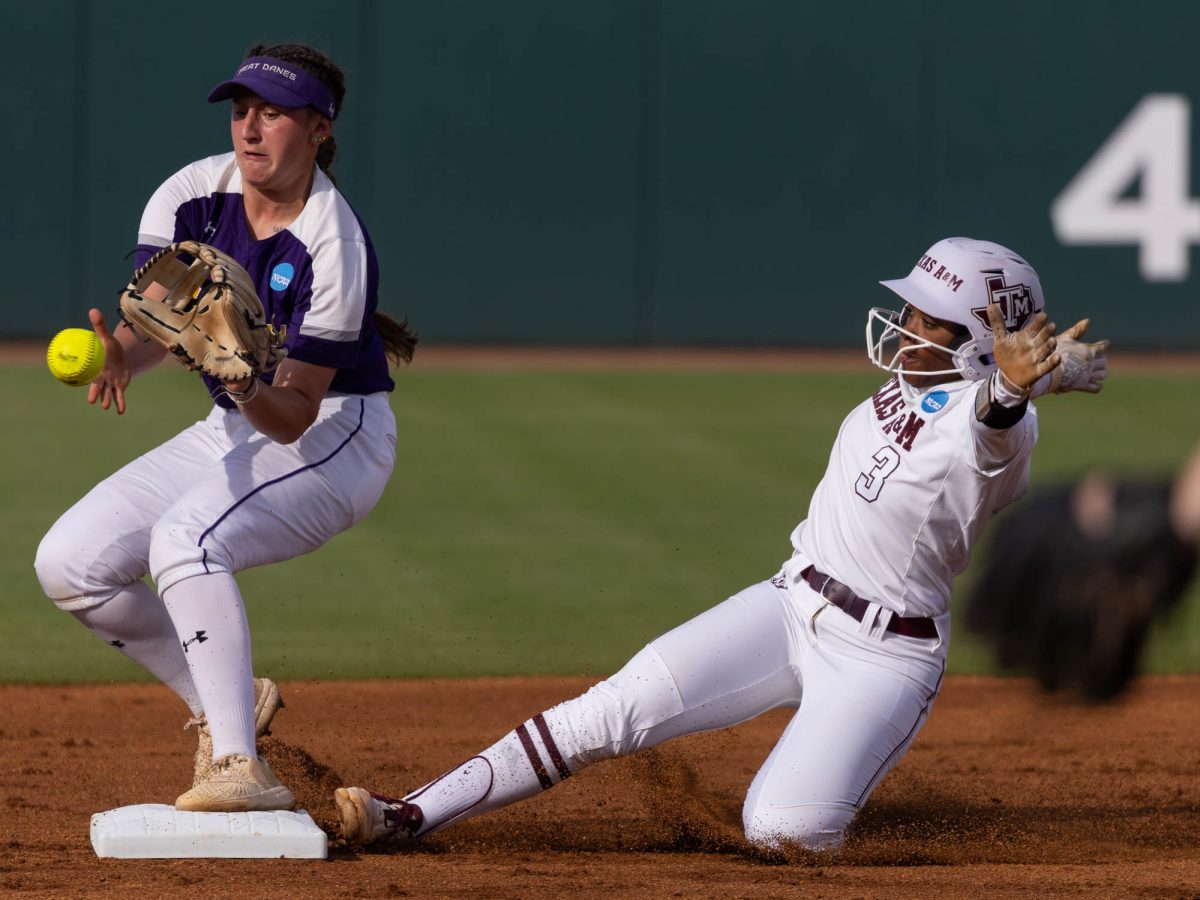Despite the hot, June sun burning, the room was ice cold: the metal table, the lighting, the tension. There was little sound other than the buzzing of the lights; the air was frozen with the knowledge that time was not.
During a pick-up game in the summer of 2008, then-Texas A&M sophomore — a future star women’s basketball point guard and team captain — Sydney Colson tore her ACL, an injury that could halt her season. With practice beginning in October and the season’s tipoff in November, it was a race against the clock for head team physician Dr. J.P. Bramhall.
However, Bramhall wasn’t always the experienced director of sports medicine who tackled the toughest of injuries. In fact, he didn’t start off interested in medicine at all — he came to play baseball.
“As I started playing, our head coach at that time, coach [Tom] Chandler, pulled me aside one day and told me that because I didn’t have ‘good hands’ I had to play as an outfielder,” Bramhall said. “I played for four years, and I lettered and had a great career at A&M.”
During his career, the Aggies won the SWC title in 1978. In his junior season of 1980, he was given the Wally Moon Award for the most improved player, and in his senior year, he was named team captain. When Bramhall graduated, he held four A&M baseball records and currently holds the school record for walks in a season, 57 in 1981.
“The opportunities that I had here at A&M go back directly to my opportunities I had as a student-athlete and a baseball player,” Bramhall said. “So, as I got interested in entering medicine and doing sports medicine, always in the back of my mind I was hoping to come back to A&M and take care of the Aggies — my team.”
It had been two weeks since Colson’s injury, and her knee was strong enough to go through with surgery. Bramhall and his associates needed to initiate the operation as soon as possible in order for Colson to return on schedule; there was no room for mistakes.
Bramhall’s passion for sports made up for the late start to his medical career. After a not-so-stellar beginning as an accounting major, Bramhall determined that his passion lay in another field; however, it was his mother Sue Bramhall, and soon-to-be-wife Belle, that convinced him that medicine was his calling. While maneuvering this new major, Bramhall decided to combine his old love with his new one.
“Once I got into medicine, of course with my background in baseball, I leaned toward sports medicine,” Bramhall said. “All my friends told me I couldn’t play a sport and do pre-med[icine] — I figured it was a challenge, so I did.”
Colson and Bramhall decided to proceed with surgery in an attempt to get the basketball player back on the hardwood as soon as possible. It was a success, and immediately following the surgery, Colson was placed into daily rehabilitation and was given a brace for a month to regain her movement. Bramhall utilized his access to technology to speed up her recovery.
Four months remaining.
The former baseball player works with A&M athletes now, but he didn’t start his medical career in College Station. After years of hard work, Bramhall graduated from Texas A&M Medical School and completed his residency in orthopedic surgery at John Peter Smith Hospital in Fort Worth. Following his residency, Bramhall got the opportunity to work with a world-renowned sports medicine surgeon.
“When I had the chance to do my sports medicine fellowship, I was selected for the fellowship with Dr. James Andrews,” Bramhall said. “[I had] the opportunity to train with him for a year in Birmingham, Ala., in 1990 and 1991 before I came back here was a great jumpstart to my career.”
After a month, Colson had removed her brace and regained full motion of her knee. However, the ACL still wasn’t completely healed, restricting the length of her movement. Bramhall was making progress, but there were still only three months left.
In his experience with Andrews, Bramhall picked up skills and experiences that helped him to become comfortable working with elite-level athletes. Bramhall would take these career-changing experiences and make his return to Aggieland to take care of “[his] team.”
“It was a wonderful opportunity to come back and become part of the sports medicine team, become part of athletics and be the head team physician at Texas A&M,” Bramhall said. “Coming back to take care of my team, every day of my career since day one in 1991 until now, I go to work and it is like my first day. I still feel that same excitement, that same joy, of being part of the A&M family.”
Two months post-operation, Colson began a jogging program to regain movement. By the time three months had passed since the surgery, she was able to run in a straight line in a controlled fashion.
One month left. Things were looking up for Colson; and for Bramhall, it was a positive in a career that often deals with tough realities.
As much as Bramhall loves his job, it comes with struggles and challenges all the same.
“The hardest part of my job is having to discuss injuries, particularly season-ending injuries and possibly career-ending injuries, with athletes,” Bramhall said. “The athletes not only at Texas A&M, but here at my practice as well, are so dedicated and so motivated and so competitive, that most of the athletes who are accomplished and have had a lot of success, thus when they have an injury sometimes it is their first injury. [When they have an injury it] is really hard to accept because you’ve had so much success at playing a game or playing a sport, and so having to deliver that news is tough.”
Bramhall’s experience as an athlete allows him to understand what it takes to return players back to their sport, both physically and mentally. To safely and quickly return players to the game using their skills, technology and resources is what Bramhall said he considers his biggest challenge and greatest excitement.
Soon enough, time was up and October had arrived.
It was four months post-operation and practice was starting for the season. If Colson had any chance of playing on the court in the first game, her ACL needed to be healed. Luckily for Bramhall and his team, Colson was healed enough to begin practice on the court.
“I felt how most athletes are going to feel [when I learned about my injury],” Colson said. “You are just devastated, and it seems like the end of the world at the time because you just wanna play your sport. I think [Bramhall] did a good job of letting me know it would be a long and difficult process, but it wasn’t something uncommon. It was something that happens to a lot of people, so you just have to work hard to come back from it, let it heal and get back to being yourself.”
Bramhall went on to monitor Colson throughout the season to ensure the health of her knee. Despite her injury, Colson went on to have a productive season and eventually lead the Aggies to the NCAA Women’s National Championship in 2011. Bramhall said that watching her recover and gain success made all the stress worth it in the end.
“The association with athletics is very exciting, [and] it’s extremely time-consuming,” Bramhall said. “There’s no clock: you’re always available, always ready to answer the call. The excitement is being around elite-level athletes and helping them with their pursuits, challenges and return to play. That’s the most enjoyable thing, being in a position where people rely on you to help them return to that level of competition.”
Through the ups and downs of his medical journey, Bramhall said he enjoys his career because he focused on what he loved. He encourages others to pursue their own interests and find their own passion to match with their careers.
“Look for the thing in your life that really makes you happy,” Bramhall said. “If it’s athletics, if it’s journalism, if it’s medicine — all those things — try to put them all together in your package because everybody’s path is different, and if you have the opportunity to put together your love, your passion, and your work-related duties, it makes it really easy to enjoy what you’re doing for a living.”
However, Bramhall cautions against focusing too much on the end of the journey. He recalls a lesson he learned in medical school: “The nectar is in the journey.”
“Don’t look at the end,” Bramhall said. “Every day, look at what you’re learning, look at the opportunities — that’s why I am sitting here 31 years later having the opportunity to be the head team physician at A&M, and it feels like I just started yesterday. That comes with any field of study, no matter if it’s medicine or whatever one chooses to do. There’s so much to learn. Don’t look at ‘When I graduate I am going to,’ you will wish your life away. Look at every day and the enjoyment that it brings.”




